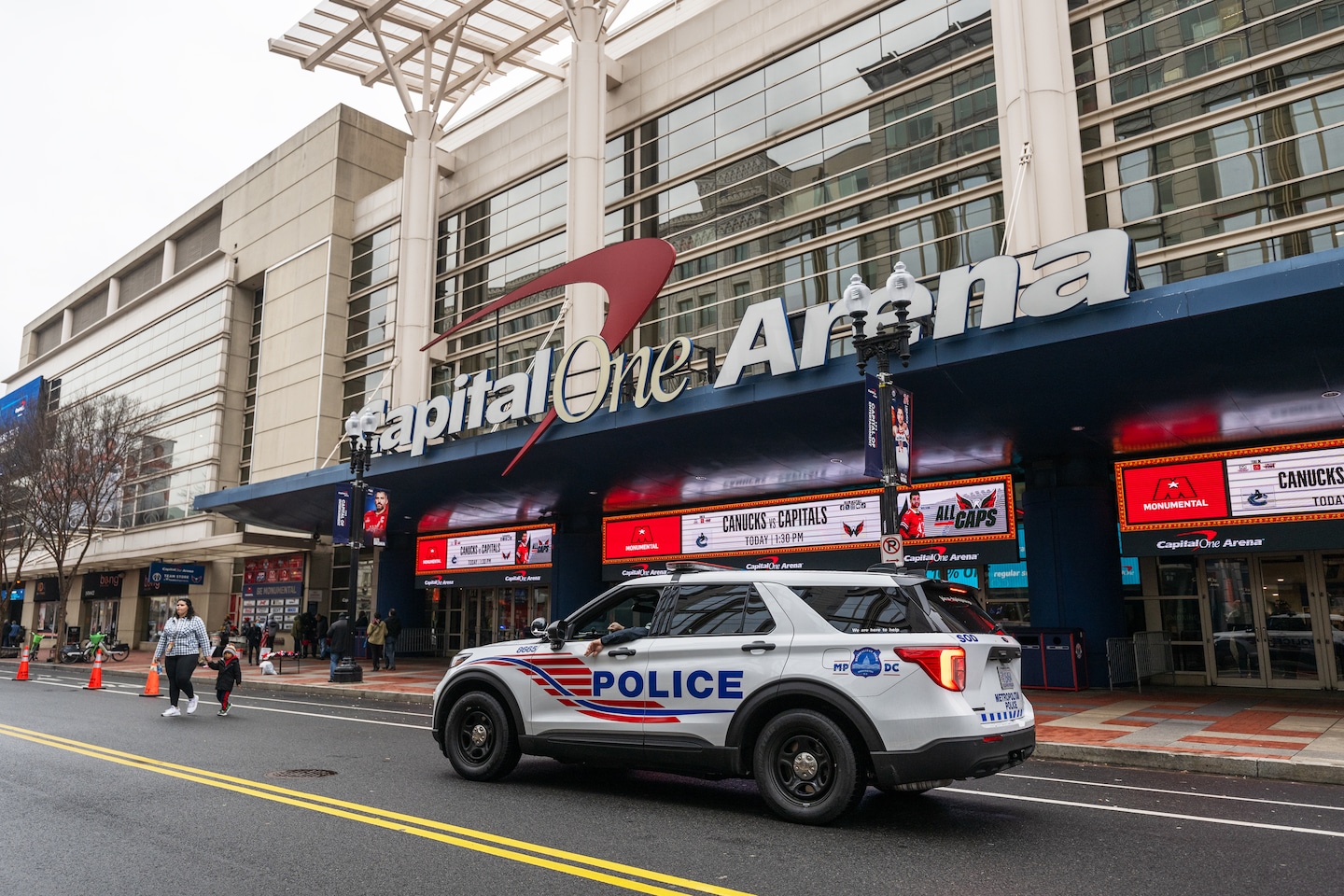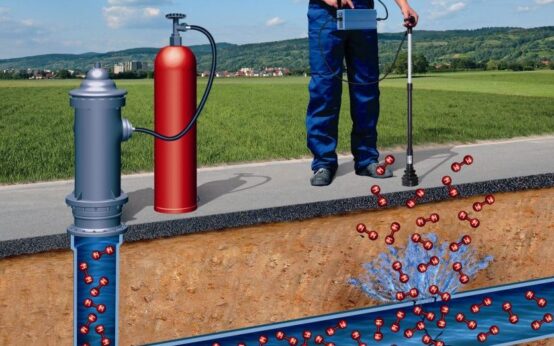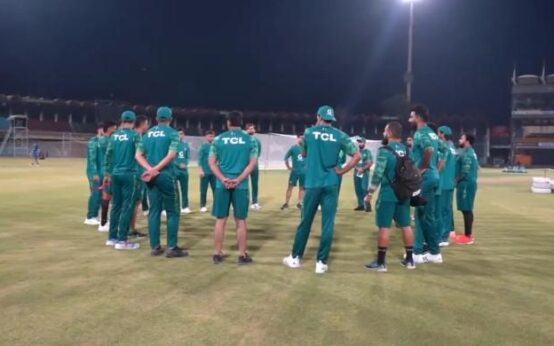Because it’s a game night, a guitarist plugs into his amplifier and plays a bluesy melody for tips. Fans wearing the Capitals’ red, white and blue exit the Metro escalator with a purpose. And F Street, the center of the region’s fiercest political and financial tug of war, looks like a makeshift D.C. police headquarters; its entrances are blocked off, only motorcycles and cruisers occupying the city block.
Welcome to our living room. Downtown. There’s a rhythm to downtown America. It pulsates and moves, and yet in city after city, the American downtown is sputtering in an attempt to find its heartbeat four years after the pandemic shutdown. I remember when it was alive and well.
While growing up where all the ranch-style homes looked the same, I was fascinated by downtown. And glamorized it as a faraway place where busy people in business suits worked in the tall buildings, and the cool and mysterious types lived in those factories-turned-condos with the oversized windows. The things I could only see on television procedurals happened downtown, I assumed. It was where I wanted to be.
My sports heroes were already there. They’d play baseball in a downtown St. Louis stadium, and the most iconic of the bunch would turn into bronze statutes, remaining there forever. To me, sports meant excitement. And that excitement lived downtown.
Of all the cultural themes that testify to America — race, religion, politics, sexuality — sports is our true identity. The thing closest to unifying us. We come together to watch sports, crowding stadium seats and experiencing the shared yet low-stakes trauma of our favorite team losing, or the breakthrough in group therapy when they finally win the big one. And for sports fans in so many American cities, that binding experience happens downtown.
But in this new and strange world, where things never quite returned to what they used to be, that synergy between our city centers and our sports no longer feels the same. Travel across downtown America and you’ll feel it, too. When even attending a Super Bowl victory parade in a midwestern downtown could cost you your life, because of America’s undying allegiance to guns, you’ll wonder if there’s a way to fix what has been broken. In Washington, it might be too late.
This week, Ted Leonsis, the owner of Capital One Arena, and his Monumental Sports & Entertainment continued to defend plans to move the Capitals and Wizards to the Virginia suburbs. In October, on the same night the Wizards played their home season opener, a 13-year-old boy allegedly attempted to carjack an off-duty federal agent three blocks from the arena. The boy was shot and killed; a tragedy that magnified complaints made by Monumental executives about the deteriorating condition of Chinatown. The city’s woes could just be an easy cover for Leonsis to expand his sports kingdom into more fertile land, but the billionaire owner isn’t the only one who feels the unsettling cadence of a downtown that no longer implies excitement.
“I’ve been yelled at. I’ve been offered a lot of drugs,” recalls a 28-year-old Capitals fan named Aaron. Aaron and his girlfriend live in Washington’s Navy Yard neighborhood and still take the Green Line to the arena, but now they avoid the exit near 7th and H Street NW.
“That bus stop is very, very crowded,” he says. “There’s a lot of weed smoking going on. There’s a lot of open booze going on.”
Downtown has changed for the worse — or at least that’s how some perceive it. Not just in Washington, but in other communities’ living rooms — in downtown Indianapolis and downtown Cleveland and uptown Charlotte, where some members of the city’s unhoused population congregate near Spectrum Center on game nights. Sports once provided the soundtrack to a thriving American downtown, but lately, the rhythm’s been off.
The vision of downtown Indy comes alive on a Sunday like this one in November. Years ago, before hosting Super Bowl XLVI in 2012, city leaders reimagined the neighborhood as the perfect sports and convention hub. The city’s two major league professional franchises play about a half a mile away from each other, and on a cold Sunday — Midwest cold, mind you — all these Colts fans really don’t have to venture outside, because an indoor walkway connects the convention center to Lucas Oil Stadium.
But because they’re Hoosiers and, apparently, are used to freezing, they walk outside anyway, and so that funny cocktail of blue horseshoes and red and white candy stripes fill the streets. Hoops — the state’s true obsession — tips off later when the Indiana men’s team plays Harvard at Gainbridge Fieldhouse. This is what they call a good day in Indy. And a great one for Todd Johnson’s sports bar.
Johnson seems rational enough when we chat. He’s 58, married with a 9-year-old son, effortlessly sprinkles in a younger man’s patois like “that’ll be dope!,” and has owned clubs and bars throughout his adult life. Yet he did something many people might find insane. Last May, he opened Walk-On’s Sports Bistreaux, a family-themed bar and restaurant on Meridian Street, about three blocks from Gainbridge Fieldhouse and a couple steps from an underpass. Ever since, he’s been trying to convince scared Hoosiers that it’s okay to come downtown again.
“Most of my friends don’t want to come downtown to visit me. They’ll do DoorDash and whatnot, because they just don’t feel safe. And that’s a direct reflection, you know, on perceptions,” Johnson says.
The people here have long memories. I learned that when I moved to Indy in 2013, and the Pacers had a fun team — winning and sitting atop the Eastern Conference — but I heard from some native Hoosiers that they still withheld their support because of “The Brawl,” which happened a decade earlier. Seriously? Seriously. So I understand what Johnson is up against.
Four years ago, the pandemic cratered downtown businesses, and its impact is still felt nationwide, with one study suggesting that downtown office vacancy rate reached 17.3 percent in 2023. Indianapolis was no different. Before covid, approximately 155,000 workers were downtown on a daily basis, according to Downtown Indy, Inc., but those numbers dwindled during the shutdown. Then, the murder of George Floyd led to protests on the streets. The nightly demonstrations turned destructive and deadly. Two people were gunned down. That vicious one-two combo (work from home, which led to higher building vacancies, and the fear of returning to the city center) made downtown an undesirable visit, and by the end of 2020, 56 restaurants and bars had reportedly closed their doors.
While the neighborhood has moved forward — new spots have opened, and features that suburbanites might love dot the area, like that ice skating rink outside the arena — many people have not.
“We continue to have challenges with what I describe as our suburban neighbors. For so many, their perception may be [steeped] in previous experiences,” Taylor Schaffer, CEO of Downtown Indy, Inc. says, explaining the ripple effect: “I think coming down to empty streets, coming down to a downtown that felt empty, that didn’t feel like the downtown they knew. I think especially at the height of the pandemic, there was an uptick in those experiencing homelessness in really visible ways. And so, as I said, I think that can really shape how people feel about a space. If it doesn’t feel welcoming, if it doesn’t feel cared for, if it doesn’t feel safe — regardless of reality.”
Schaffer says downtown Indy is responsible for less than 3 percent of crime that occurs in Marion County, and the hours of off-duty foot and bike patrols have increased from 10 hours a week to almost 120. However, the perception, for some, is that downtown still looks like a sound stage for a post-apocalyptic zombie flick.
“They get locked in on that stuff. They do,” Johnson says. “We are not doing up to our expectation level [at Walk-On’s] but we are holding our own. … The stretches in between conventions and big sporting events, it’s very slow. And all my compadres up and down Meridian Street tell me the same thing. All the other bars and restaurants. They’re very, very up and down, which hasn’t been the case before 2019.”
Thanks to the sports doubleheader of Colts and IU hoops, followed by a Pacers game the next night, Walk-On’s remains busy during this November stretch, its best weekend since opening. And Johnson seems excited about the crowds that would come when Indianapolis hosts the NBA All-Star Weekend. But when thousands of fans flood downtown Indy before Sunday’s All-Star Game, the family-friendly bar and restaurant at 247 South Meridian Street won’t be there. After only eight months, Walk-On’s closed its doors and is moving to Fishers, an Indianapolis suburb in the north.
Perception — that undefeated foe — won again.
It’s a night after one of those lake-effect snowstorms dumped 13 inches of snow on Northeast Ohio, and a man on East 9th Street is curled up atop the metal grate on the sidewalk, so that the rising steam provides some measure of heat. It doesn’t appear as though he has anywhere else to go.
I walk past him, like so many others. The downtown streets are packed. Because its people aren’t afraid of the cold, I can see why downtown Cleveland ranks among the top Midwestern cities in pandemic recovery. A University of Toronto study has tracked 66 North American cities and how they’ve bounced back since 2020, based on downtown visitors. In the latest update, Cleveland came in at 31st overall and fourth among its Midwestern peers, with 78 percent recovery, behind Indy at 79 percent.
“Cleveland has a bona fide downtown comeback story,” says Karen Chapple, the director of School of Cities at the University of Toronto.
The progress can be seen in the business openings — a net increase of 61 since March 2020 — and office-to-residential conversions. Pro sports seems to be aiding this renaissance. Bedrock, Cleveland Cavaliers owner Dan Gilbert’s real estate company, has struck a deal with the city on a massive $3.5 billion riverfront development. Partly because of this undertaking, Downtown Cleveland CEO Michael Deemer calls the Cavs “phenomenal partners in building a vibrant downtown.” The team also gives back in direct ways; according to the Cavs’ 2022-23 Community Impact report, the franchise has donated more than $48 million since it moved to downtown Cleveland in 1994. However, that comes out to less than $2 million on average every year — a fraction of what taxpayers have given the team.
Cleveland’s three pro sports stadiums are all located downtown, with the nonprofit Gateway Economic Development Corporation serving as landlord for the Guardians and Cavaliers. When the facilities need repairs and renovations, each individual team can get approximately $92 million from taxes collected on alcohol and cigarettes — the county’s “sin tax” — through 2034. Rocket Mortgage FieldHouse, where Gilbert’s Cavs play, has already received $82 million from taxpayers. The arena should have just $10 million remaining from the pot, but last August, Gateway approved the Cavs’ request for an additional $24.4 million for more upgrades.
Though Gilbert would profit immensely from a thriving city where his NBA team plays, his commitment to overhaul the downtown riverfront makes me wonder about billionaire sports owners and their civic responsibilities. In return for more than $100 million in public financing, what do Clevelanders get?
They get a night out after a snowstorm.
What other community event can gather 19,000 people together on a frigid evening? The superficial draw might be watching their guys beat the Atlanta Hawks. But the true benefit is the feeling of belonging and connection, which is why Natalie Harris comes downtown.
Harris, that brave woman. She’s conducting street interviews about Cleveland’s beloved sports — without gloves on — for a class assignment. She energetically chats up a parking lot attendant on Prospect Avenue, laughing at his musings about the Browns and holding a lavaliere microphone near his mouth.
She’s good at this. Charming and gregarious, she’s like the fan you’d want pull up a seat next to at a sports bar and debate Flacco vs. Deshaun. At 41, Harris serves drinks at her day job. But last year when she sent her oldest to college, Harris decided to make a leap herself, and now she’s studying to become a sports broadcaster. Much like her city’s downtown, Harris is making a comeback and sports is at the center of it.
Downtowns, at their core, reflect their cities. When you go to an arena located in the ‘burbs, you’ll sit and wait in traffic on the interstate, pay too much for parking, watch a game and then leave, to once again get stuck behind a sea of red taillights. But when you go downtown for sports, the game day experience should feel like an immersive one. You’ll eat, walk around, interact with the city. Its electricity, as well as its distress. In America’s post-pandemic reality, that distress has most visibly been seen in a rise in homelessness.
Although some measures have helped curb the uptick of homelessness, the U.S. Department of Housing and Urban Development reported, on a single night in January 2023, more than 650,000 people in America were without permanent shelter, an increase of 12 percent from the previous year.
In Portland, more than half of people in families with children experiencing homelessness were unsheltered, according to HUD’s 2023 annual report; last year a TikTok video showed a fire around a homeless camp in downtown Portland near the Moda Center, where the Portland Trail Blazers play. City officials in San Diego — which ranked fourth in homelessness among major cities — cleared homeless camps near Petco Park ahead of the Padres’ home opener last year.
In Indianapolis, Reynaldo Garcia, who once earned $1,000 a week installing drywall before drinking it all away, tells me he lost his apartment in 2020. When the Pacers play, he’ll sit across the street from Gainbridge Fieldhouse. On a good night he’ll make $20 bucks.
“Do you think I’m happy to be here? No! Nobody’s happy to be here,” Garcia tells me. “I don’t want to die like a dog in the street.”
Three teenage boys in Pacers gear exit the parking garage where Garcia places his seated walker, and while waiting for the light to turn green, the one with a head of mop top curls reaches for his wallet.
“Got any words of advice,” the boy asks Garcia, dangling the money.
Garcia doesn’t respond.
“It don’t matter. Here’s a dollar,” the boy says.
Back in D.C., where the electric guitarist strums the blues, the marijuana — this particular strain smells like dead skunk — fills the air, and the fans stream past the man with the gray hoodie, the Caps are about to play. Downtown.
I wonder what our living room will look like if the teams that occupy Capital One Arena leave. For now, however, the Caps and the Wizards still play in Chinatown. In a neighborhood that composes our city’s wretched and beautiful song. It’s far from perfect, but it’s ours. And so for now, the rhythm goes on.


 Best Underground Water Leak Detection Equipment 2024
Best Underground Water Leak Detection Equipment 2024  Best Backyard Ideas: Turn Your Outdoor Area Into a Creative and Calm Haven
Best Backyard Ideas: Turn Your Outdoor Area Into a Creative and Calm Haven  Babar, Rizwan are good players but not whole team, says Mohammad Hafeez
Babar, Rizwan are good players but not whole team, says Mohammad Hafeez  Pak vs NZ: Green Shirts aim to bounce back against Kiwis today
Pak vs NZ: Green Shirts aim to bounce back against Kiwis today